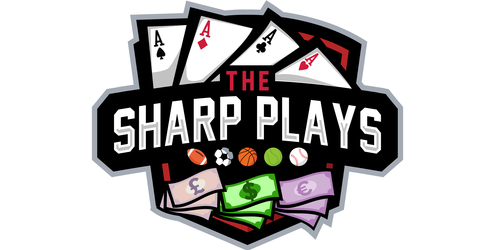
🎭 The Art of the Head Fake in Sports Betting
Last week there was a surge in interest around head fakes, and I was surprised how many people were unfamiliar with the concept. Let’s fix that today.
We’re diving into the psychology, strategy, and execution of one of the sharpest moves in betting: the head fake.
🤔 What Is a Head Fake?
In sports, a “head fake” is a feint — a quick motion to mislead an opponent.
🎯 In betting, a head fake is when a sharp bettor places a wager to deceive sportsbooks into moving the line — so they can hit the opposite side later at better odds and higher limits.
It’s a calculated strategy — a dance of misdirection, patience, and precision.
🎾 A Real Example: Rublev vs. Zverev
Let’s break it down with a real-life example from a tennis match just this week:
- Night before the match: Sharp bettors quietly bet $2K–$3K limit wagers on Rublev.
- That was enough to push the line from Zverev -163 ➡️ -152, thanks to low liquidity and sharp influence.
- Public bettors saw the move and piled in, further pushing the line down.
- Mission accomplished — the line was softened in favor of Zverev.
⏰ 30 minutes before post:
Limits jump to $10K–$15K. The sharps reappear and smash Zverev across every book and exchange. The line jumps to -186 in minutes.
📈 Final result? Zverev wins handily: 6–0, 7–6.
The Rublev bets? Just bait.
💼 Why It Works (And Why It’s Brilliant)
Head fakes rely on the natural movements of the market:
- Low-volume, low-limit sharp action moves lines disproportionately.
- The public follows what looks like steam, pushing the line even more.
- Once the trap is set, sharps unload big at improved prices.
The initial $10K risked on Rublev?
Just a small cost of doing business when you’re set to win $150K or more on Zverev.
💡 Why Do Books Fall for It?
Because books have to respect early sharp action. Sharps don’t always head fake.
Sometimes the early move is the real deal — sometimes it’s bait.
This mix of authentic early bets and fakeouts keeps books guessing. If books ignore early sharp action, they risk exposure. If they respect it, they might get played. That’s the razor-thin edge sharp bettors exploit.
🚩 The Risk for Bettors
Here’s the kicker for everyday bettors:
You often can’t spot a head fake until it’s too late.
If you blindly follow early sharp action — especially when limits are low — you may be buying into a setup.
That’s why I’m cautious with early-week sharp action on NFL and NCAAF. The early info might look juicy, but it could just be sharks laying bait.
Instead, I highlight the Top Early Sharp Buy of the week in The Sharp Plays Newsletter — typically a legitimate early buy, not a fakeout. Still… you must monitor sharp action right up to game time.
🧠 Why Head Fakes Fascinate Me
Head fakes are not only effective — they’re beautiful.
There’s a brilliance to the choreography — the timing, the psychology, the market manipulation.
When you watch one unfold in real time, you’re watching chess on the betting board. And if you’re sharp enough to recognize it, you may just catch the real value — or avoid being the sucker on the wrong side.
🎯 Final Thoughts: Be Wary, Be Sharp
Head fakes remind us that:
- Not all sharp action is what it seems,
- The timing of a bet can matter just as much as the side,
- And early steam can just as easily be a trap as it is truth.
So whether you’re tailing sharp action or building your own models, always ask yourself:
“Is this a real move… or am I watching the setup for something bigger?”
When in doubt — wait it out. Smart money often shows up late.
Good luck in your action!
~ The Sharp Plays
